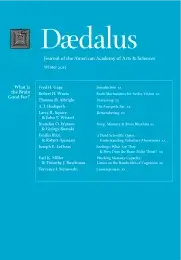Feelings: What Are They & How Does the Brain Make Them?
Traditionally, we define “emotions” as feelings and “feelings” as conscious experiences. Conscious experiences are not readily studied in animals. However, animal research is essential to understanding the brain mechanisms underlying psychological function. So how can we make study mechanisms related to emotion in animals? I argue that our approach to this topic has been flawed and propose a way out of the dilemma: to separate processes that control so-called emotional behavior from the processes that give rise to conscious feelings (these are often assumed to be products of the same brain system). I will use research on fear to explain the way that I and many others have studied fear in the laboratory, and then turn to the deep roots of what is typically called fear behavior (but is more appropriately called defensive behavior). I will illustrate how the processes that control defensive behavior do not necessarily result in conscious feelings in people. I conclude that brain mechanisms that detect and respond to threats non-consciously contribute to, but are not the same as, mechanisms that give rise to conscious feelings of fear. This distinction has important implications for fear and anxiety disorders, since symptoms based on non-conscious and conscious processes may be vulnerable to different factors and subject to different forms of treatment.
The human mind has two fundamental psychological motifs. Descartes’s proclamation, “I think, therefore I am,”1 illustrates one, while Melville’s statement, “Ahab never thinks, he just feels, feels, feels,” exemplifies the other.2 Our Rationalist inclinations make us want certainty (objective truth), while the Romantic in us basks in emotional subjectivity. Psychology and neuroscience recognize this distinction: cognition and emotion are the two major categories of mind that researchers study. But things were not always quite like this.
Rational thought has always been treated as a product of the mind, and emotions were traditionally viewed as belonging to the body.3 Descartes, following Plato’s lead, said that humans differ from animals in that we have a rational mind (a soul), but are similar to animals in that we have bodily passions (emotions) that interfere with reason. Somewhere along the way, two things happened to give us our more integrated modern view. . . .
Access the full volume here.
